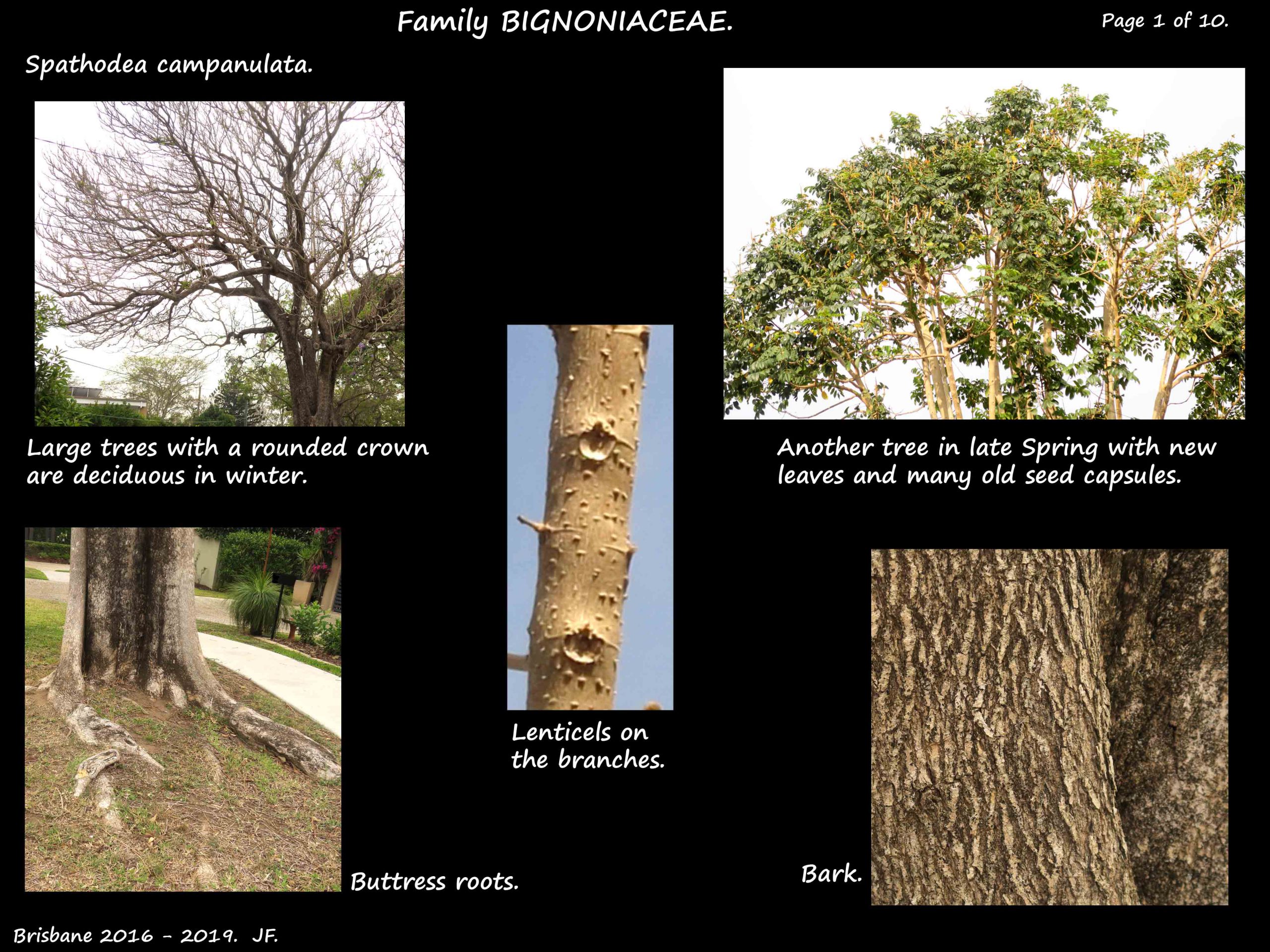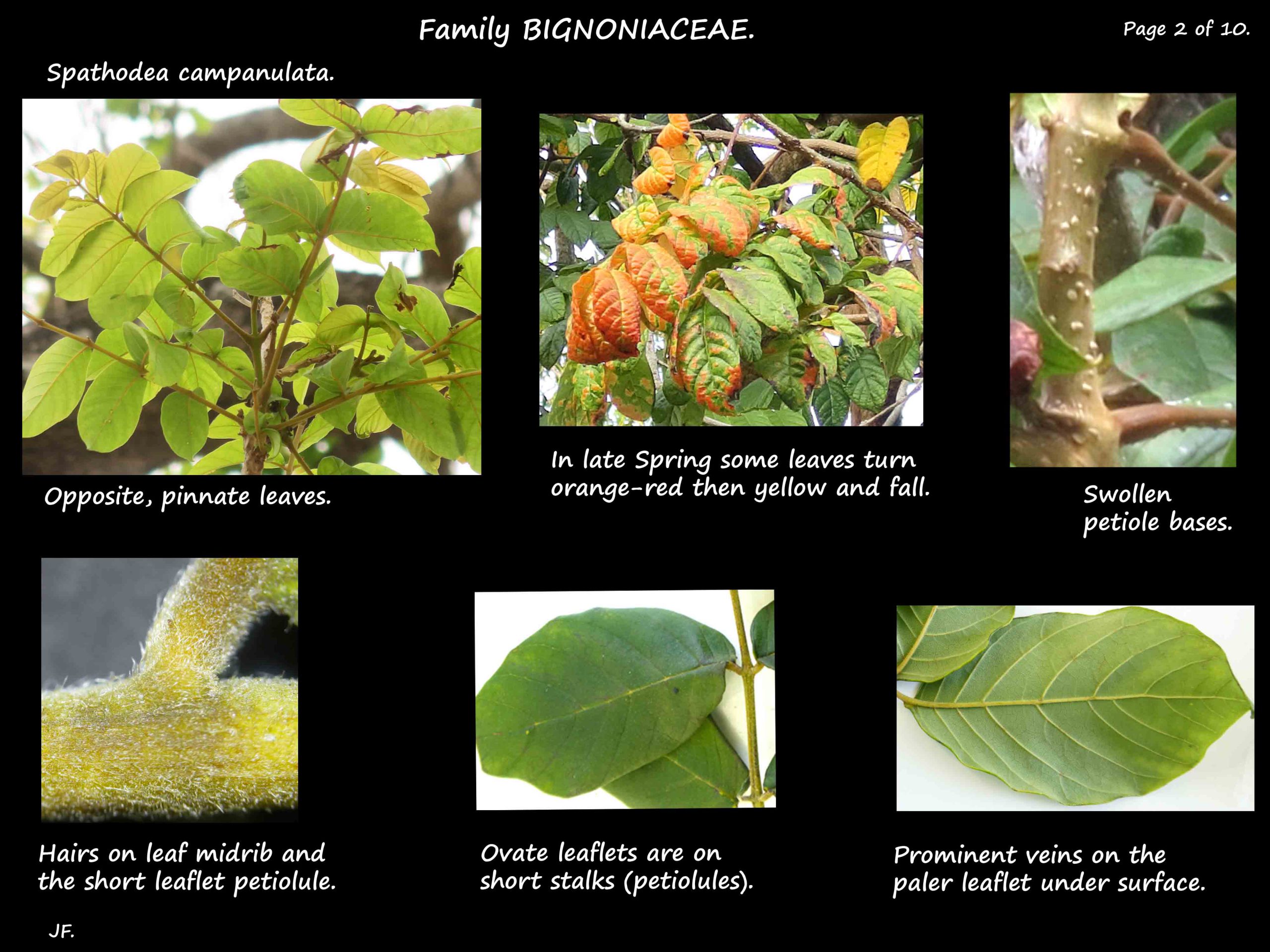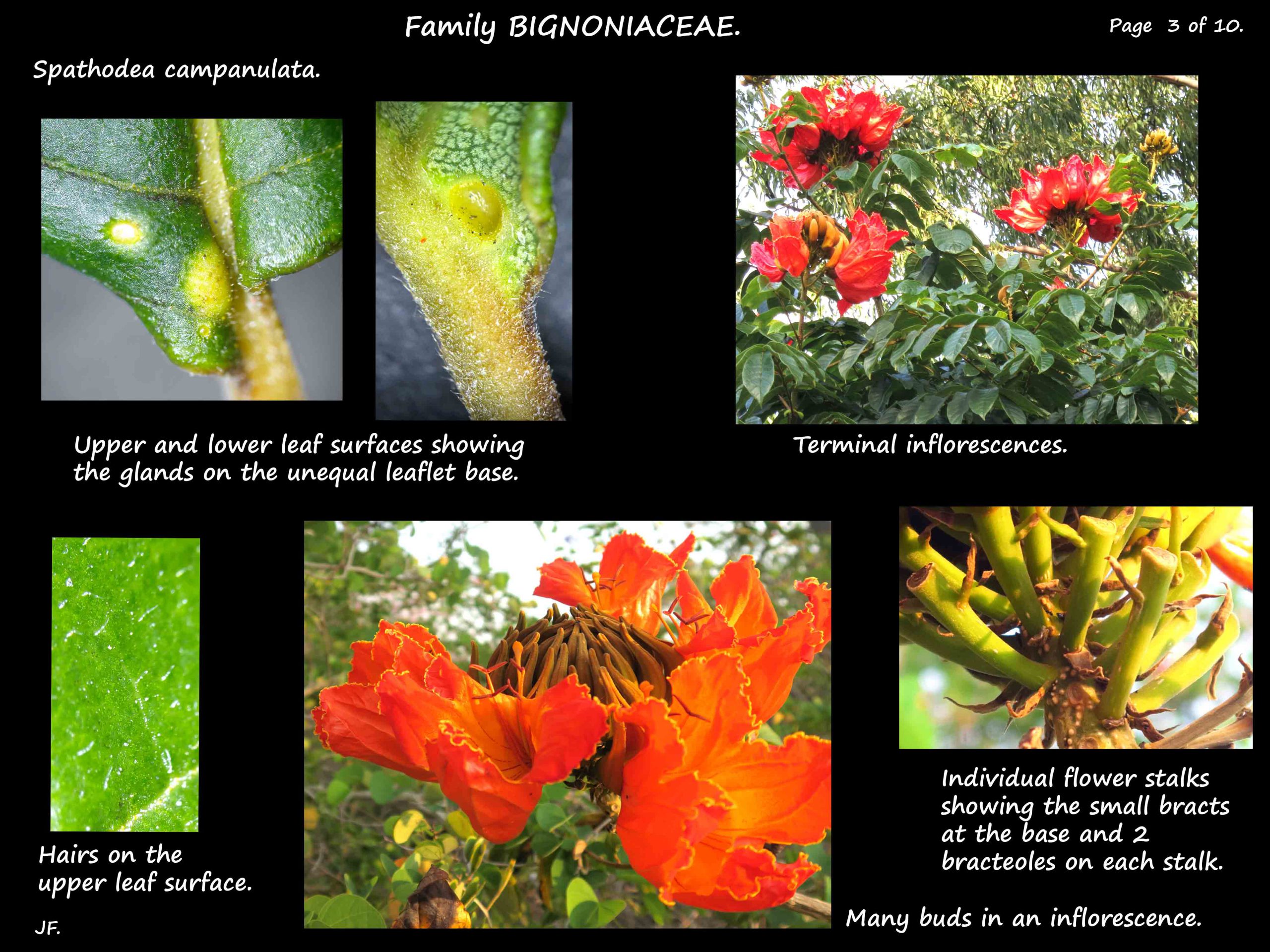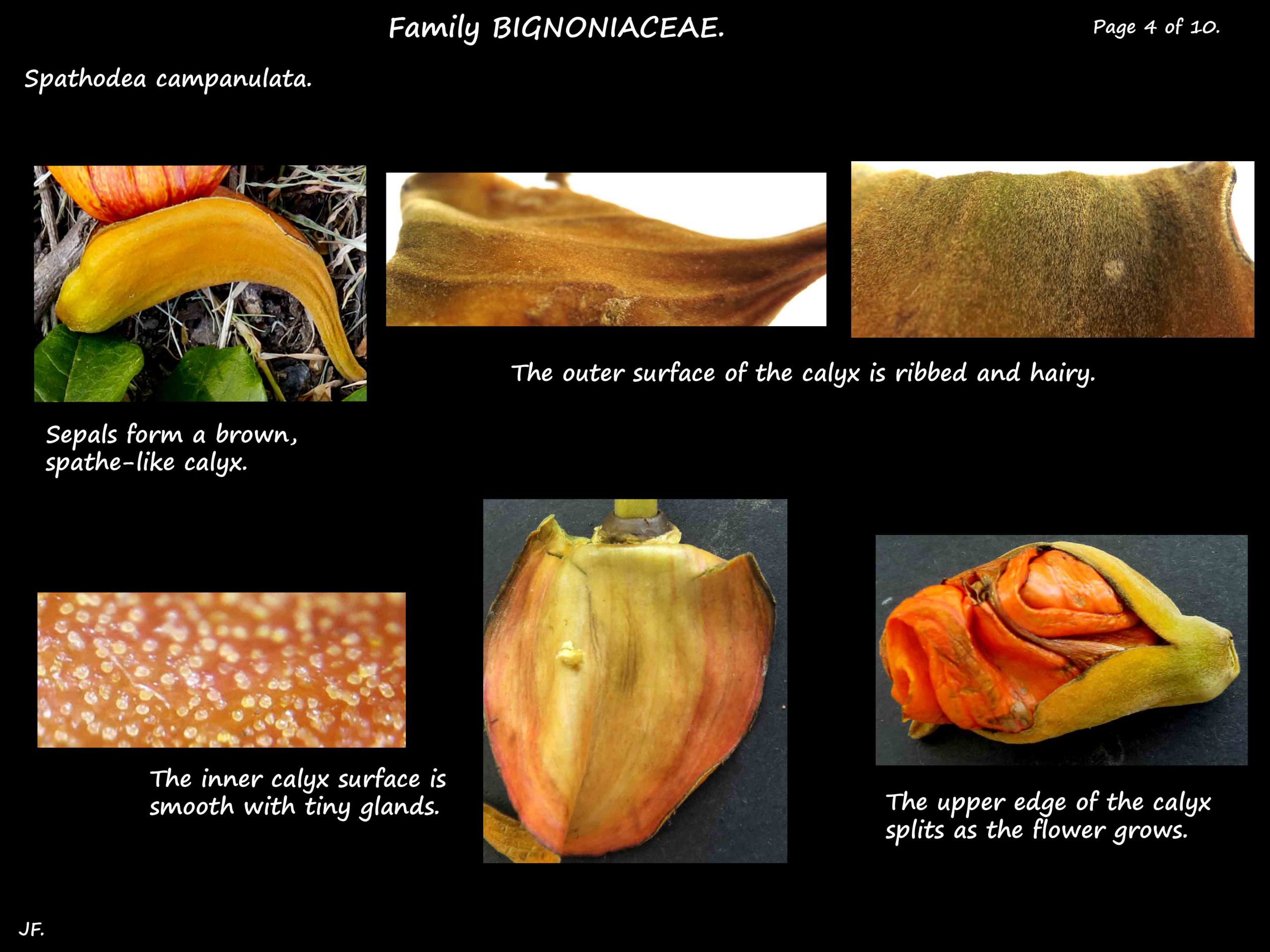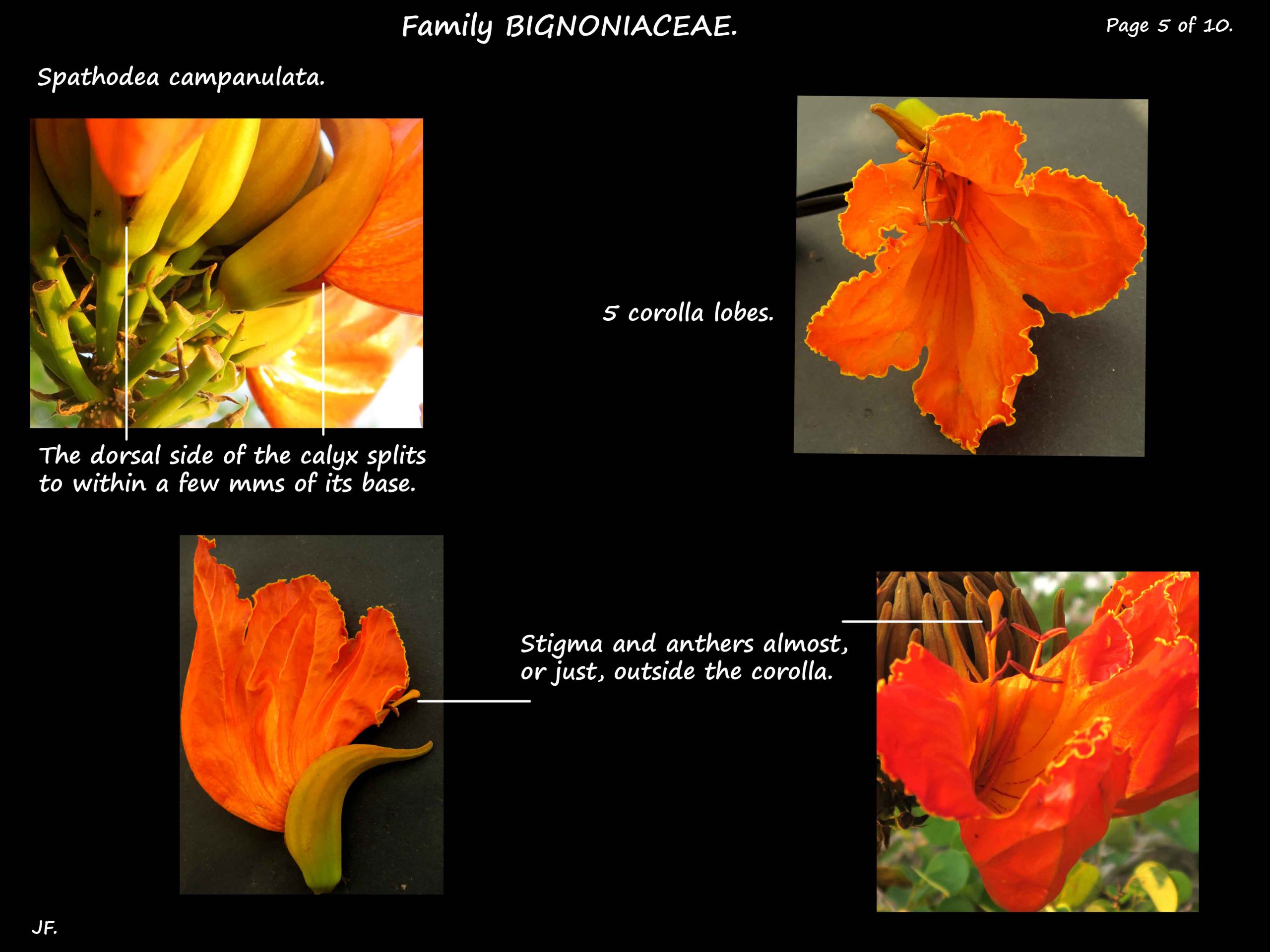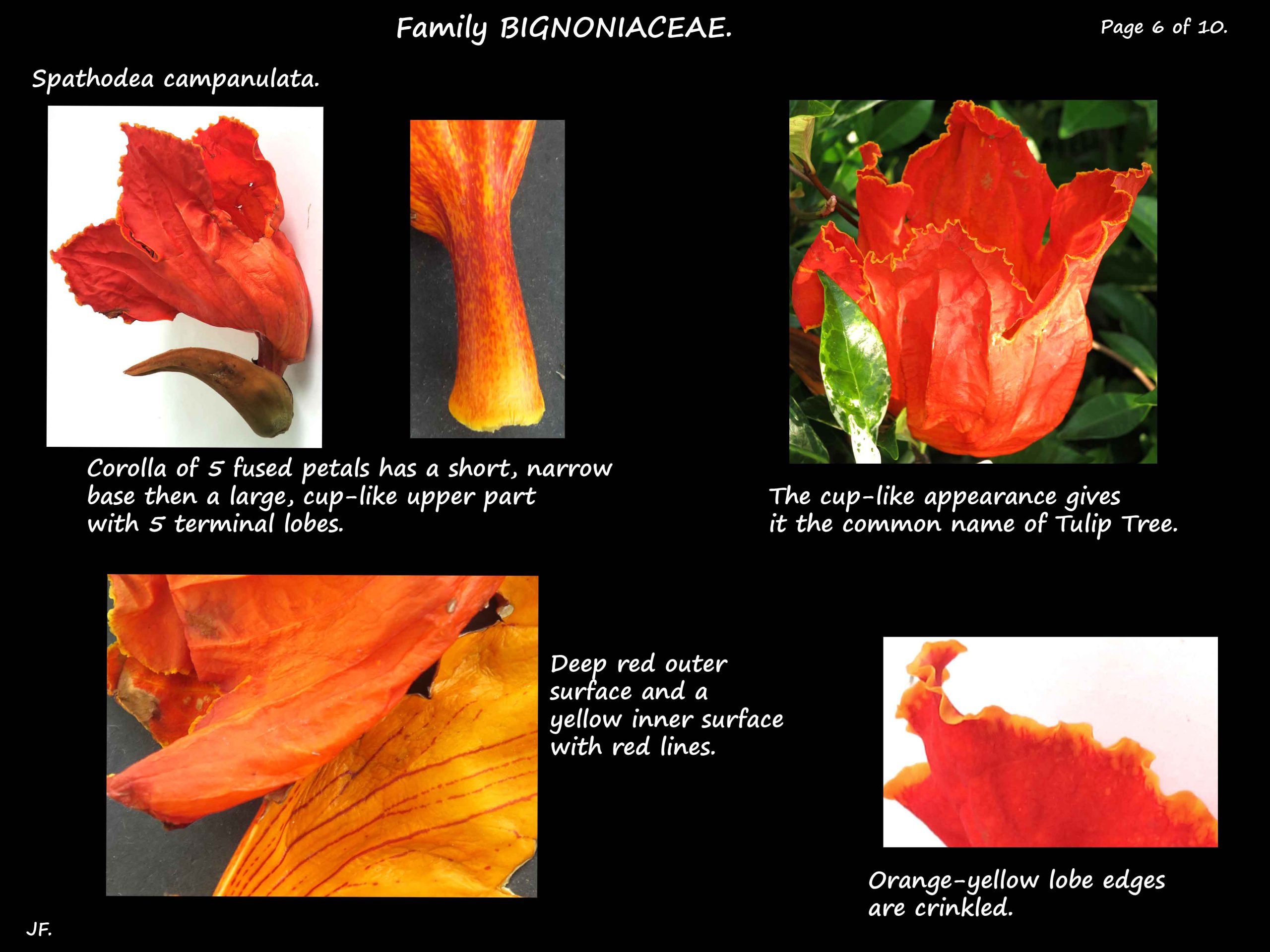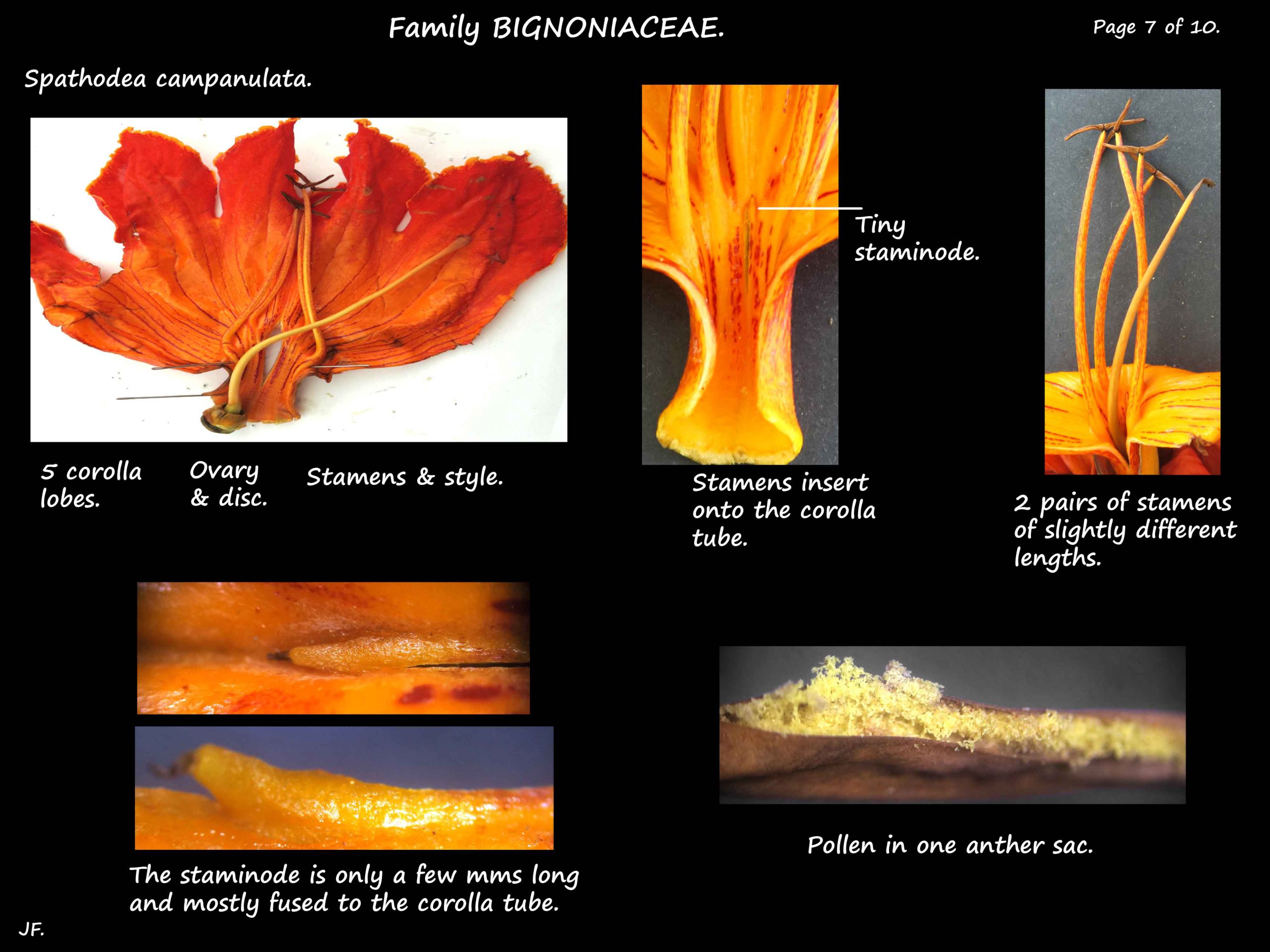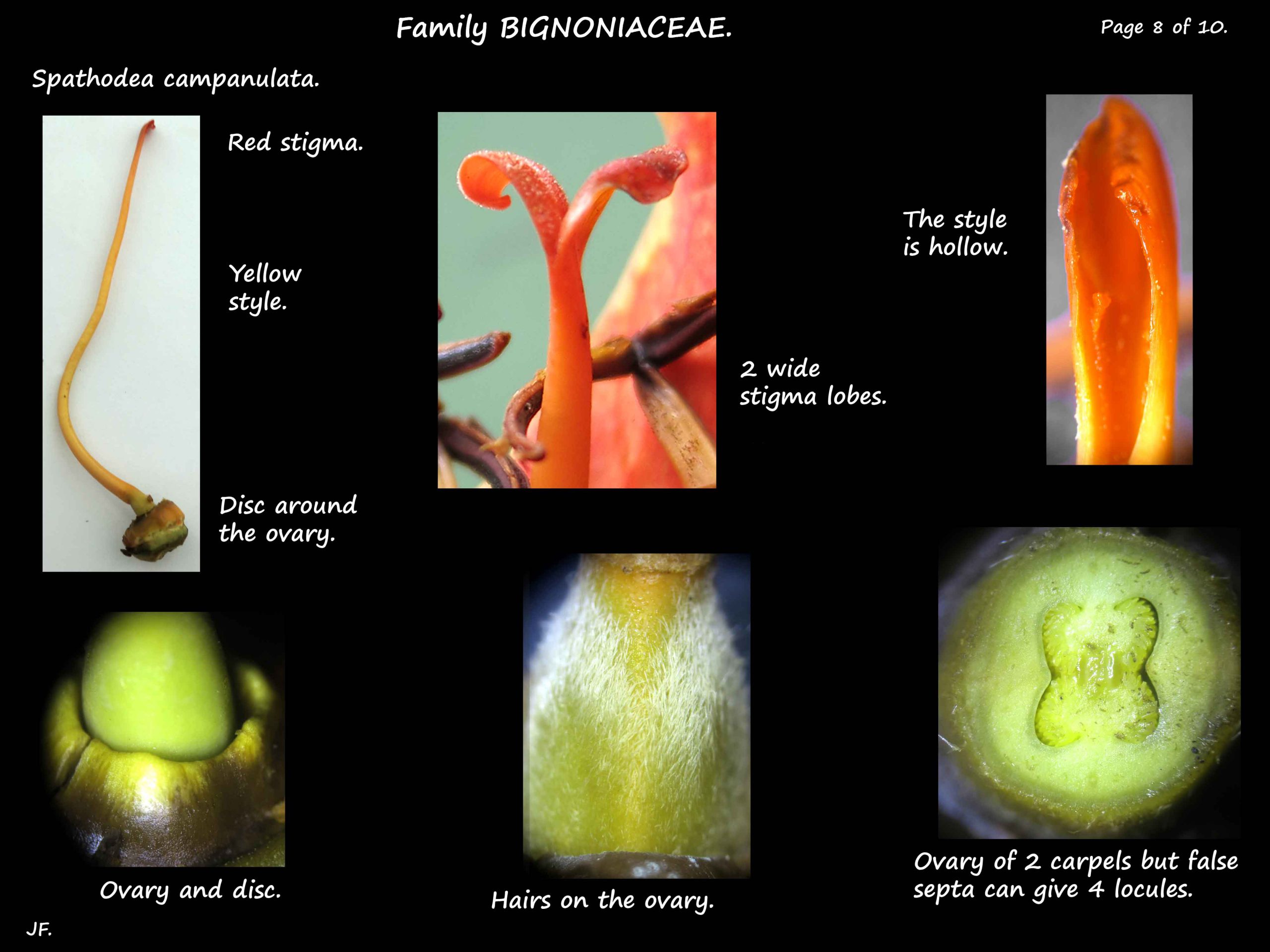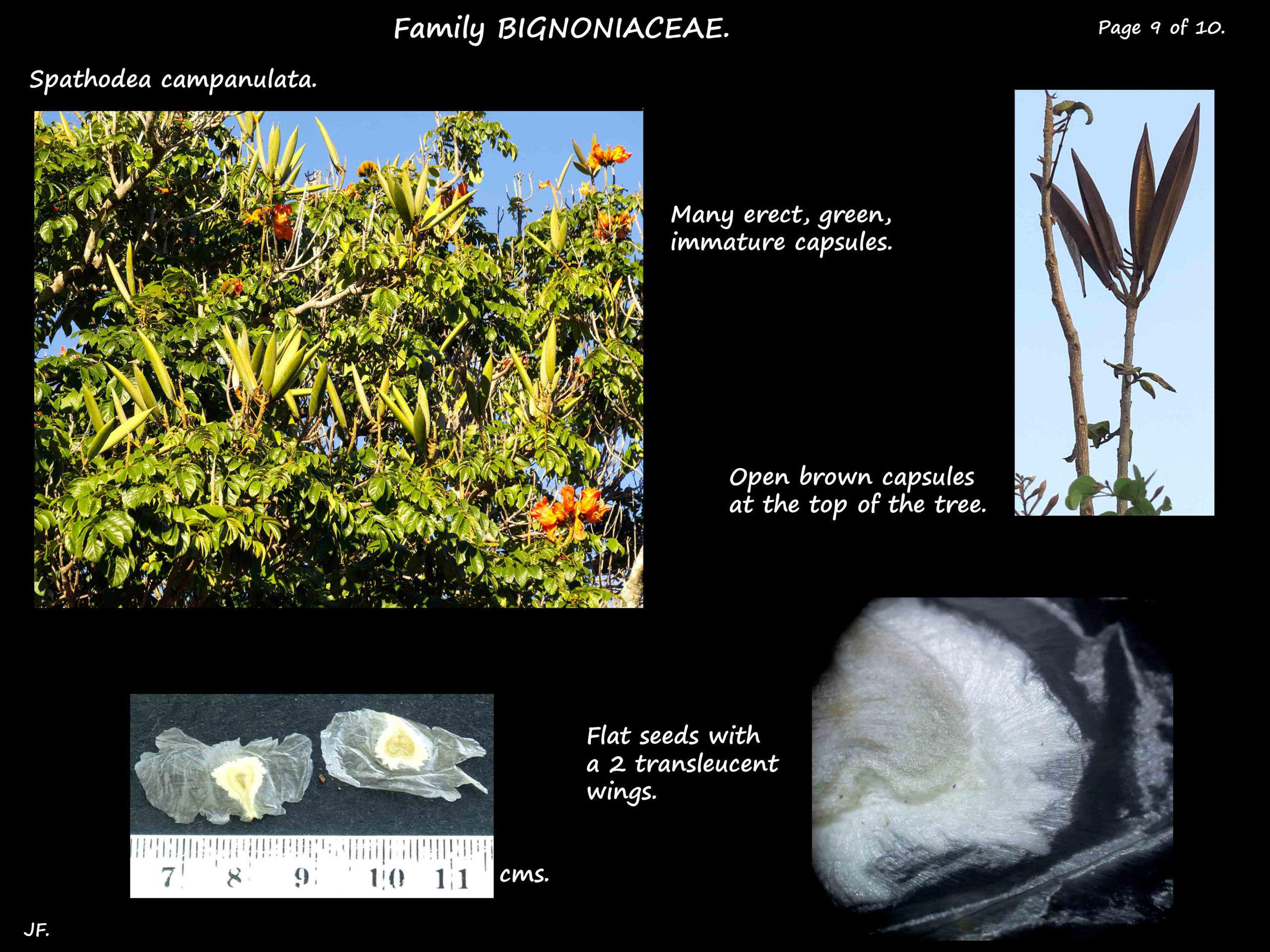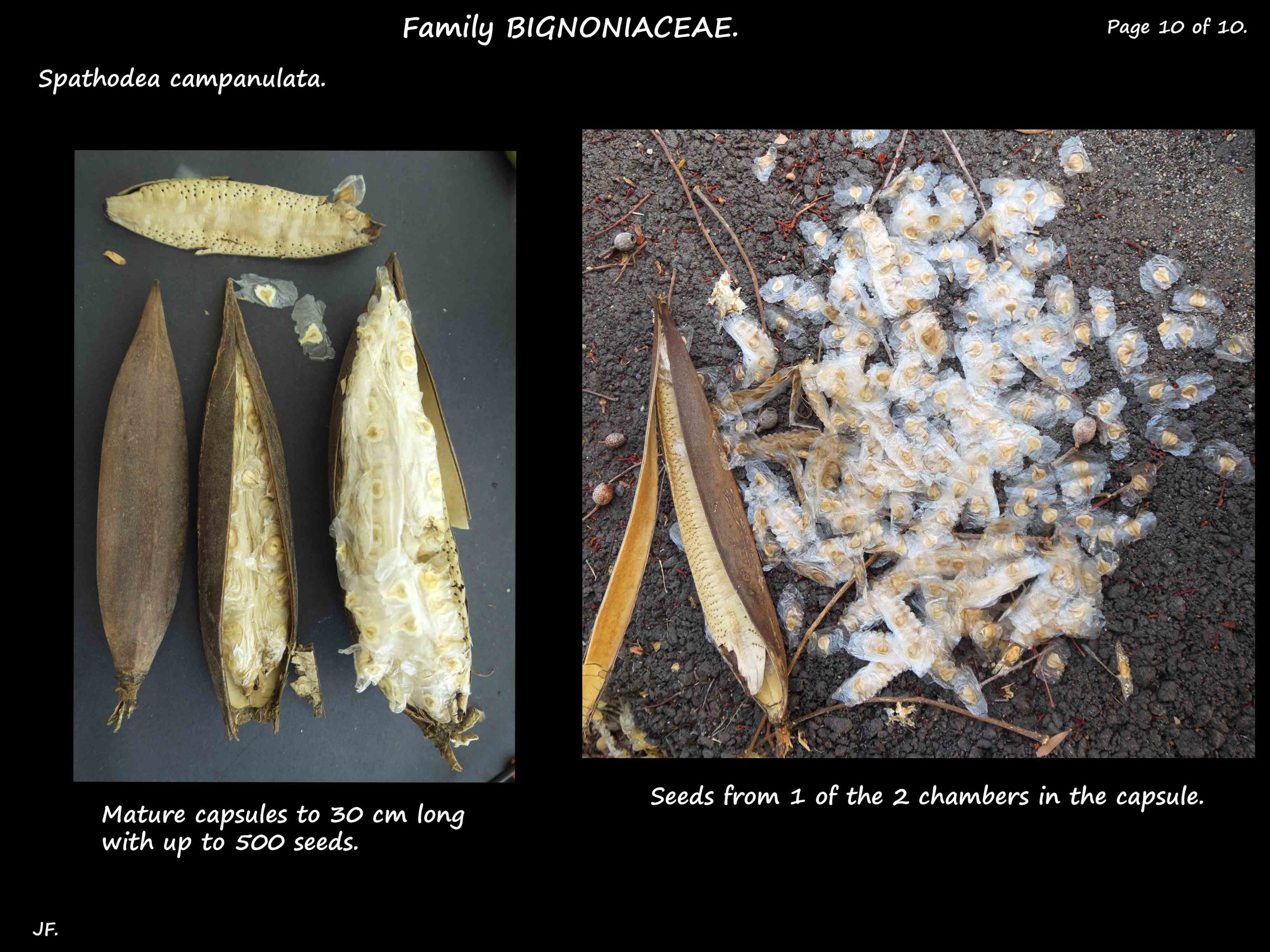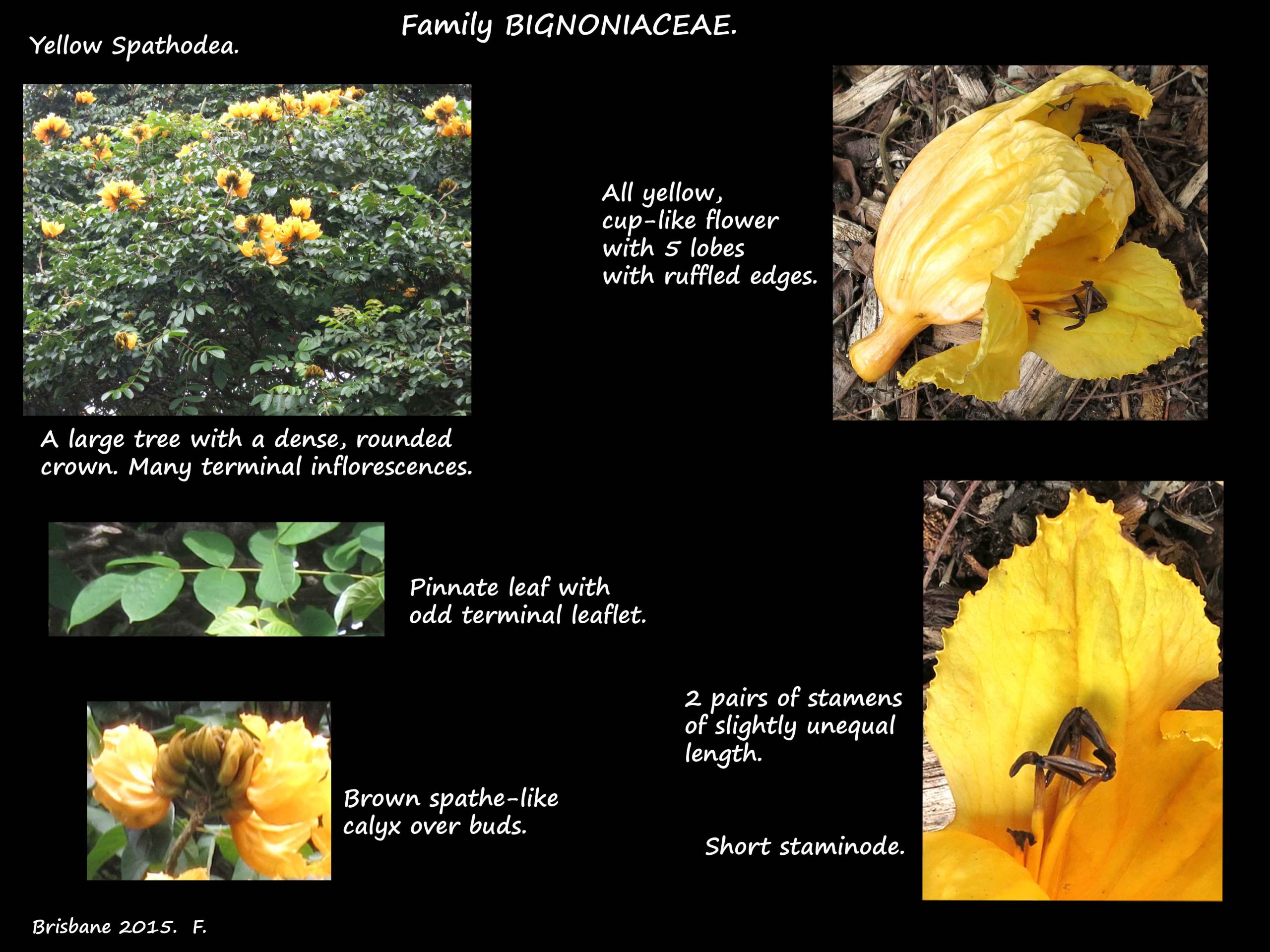Spathodea campanulata.
Family Bignoniaceae > Tribe Tecomeae.
The African tulip tree is the only species in the Spathodea genus.
It was introduced to Queensland as an ornamental but has become an invasive weed.
A medium to large tree to 25 or 35 m high with a rounded crown.
The thick trunk, with lumpy grey bark may have buttress roots.
Branches have small pale lenticels and young branches may have a few hairs.
Damaged roots produce suckers.
The once divided (pinnate) leaves are oppositely inserted but occasionally in groups of 3.
The leaf stalks (petioles) are up to 6 cm long with a thicker base.
The oval blades, up to 20 cm long, have up to around 7 pairs of leaflets and a terminal one.
Veins are prominent and there are some hairs underneath.
New leaves have a bronze tint.
Leaflets, on stalks a few mms long, have soft brown hairs.
The leaflet bases may be asymmetric (oblique).
The lower leaflets may be bent backwards or down.
The leaflet bases have 2 or 3 pale, dome-shaped glands.
Erect terminal inflorescences can have up to 50 flowers.
They are on stalks 6 to 10 cm cm long covered with brown hairs.
Individual flowers, on very short or no stalks, have 2 curved bracteoles to 1 cm long.
The bisexual flowers are around 12 cm long and 7 cm across.
The sepals are fused to form a 5 cm long, upward curving tube with a tapering tip.
This outside of this spathe-like calyx is covered with flattened, brown hairs.
When the bud is ready to open the calyx splits along one side.
The bell-shaped corolla has 5 fused petals with 3 cm long terminal lobes.
It is a bright red or scarlet with a crinkled yellow-orange rim on the lobes.
The inside of the corolla tube is paler or yellowish and has dark lines.
Some trees have yellow flowers.
The 4 stamen filaments, with orange to brown anthers are inserted onto the corolla tube.
There is a small staminode.
The hairy superior ovary has a yellow style and a reddish 2-lobed stigma.
Flowers produce a lot of nectar.
Fruit are erect, slightly flattened, green then brown capsules up to 30 cm long.
They have 2 chambers holding about 500 flat seeds with transleucent wings.
J.F.
